Demei's View - Wine Communication from a Chinese Winemaker
I was really excited when I found out the last dinner of my recent Bordeaux trip was going to be at Domaine de Chevalier.
This is such a special estate for me. Twelve years ago, when I was still a student, an April dinner at Domaine de Chevalier left such a beautiful memory in my mind that I will likely never forget.
It was at nightfall after drizzling rain when I first met Mr and Mrs Bernard at the estate.
Mr Bernard had a unique way to treat his guests. All the wines presented at the dinner were tasted blind, and the labels were only shown after a discussion among the hosts and the guests. What surprised me most was that the vintages of these wines all share the same last digit (e.g. 1941, 1971, 1921) which made the dinner at the Bernards’ more special.
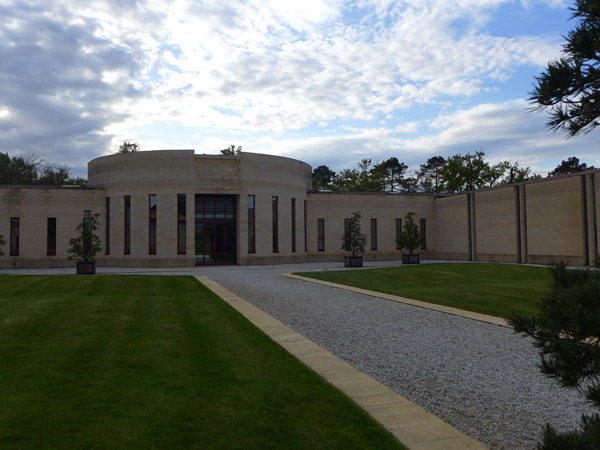
Entering the gate of the estate, I could see that the budburst of their Petit Verdot had started, and seemed to be progressing even faster than the Merlot.
The four of us first paid a visit to the new builds of the estate, guided by owner Olivier Bernard and technical director Thomas Stonestreet. Years after my last visit, a set of conical concrete fermentation tanks were added to the winery, as well as a separate new cellar for bottled wines. The brand-new 1600-square-metre instalment, as Bernard proudly pointed out, is powered by solar energy. The power it generates is not only sufficient for its own use, but also fulfils part of the needs of other buildings surrounding it. This is a classic example of how an entrepreneur seeks to guide the industry and shoulder social responsibility after achieving a great success by his products and brands.
Visiting the estate at this particular time of year meant that we had a chance to taste the barrel samples of its latest vintage. 2013 is a difficult year for Bordeaux—perhaps the most difficult so far in the 21st century. It started with a cold spring, followed by hail in summer in several regions, and ended with a rainy harvest season. Almost all kinds of diseases that threaten the health of a vineyard appeared somewhere at some point.
To make a successful wine out of such a vintage, ‘first of all you need an excellent terroir, and support it by human efforts. In an average vintage these will be enough to produce a good wine; but in 2013, you need an extra stroke of luck.’ Bernard gave his pertinent opinion when the guests tasted and appreciated the barrels samples. The wines, especially the whites, seemed to me even better than the previous vintage. This is a finely crafted, elegant, balanced and not over-powering white wine, and could be described as having the characteristics of a capable, serious and well-groomed gentleman.
At dinner time we were joined by two more guests. The Champagne for tonight was Pol Roger Blanc de Blancs 2000 - fresh, lively with a hint of sweetness at the finish. I remembered that twelve years ago, the champagne of choice for the evening was Taittinger Comtes de Champagne Rose 1991. Having this in mind, I was almost certain that the wines selected for tonight would have a vintage ended by ‘0’.
So the dinner began. We were first greeted by two dry whites: one of them was gold-to-tawny in colour, with a nose of dried apricot, citrus and honey, followed by a rich yet lively palate. The other had a much lighter gold with a greenish tone; faint nose of Sauvignon Blanc led to a refreshed, balanced palate. The last meal I had here, we enjoyed two dry whites from Domaine de Chevalier—1971 and 1941, which were proof of the wines’ potential to age.
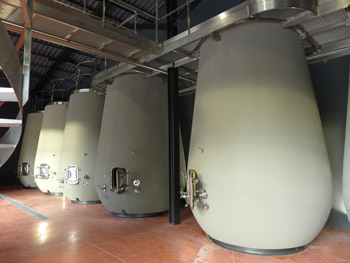
© Li Demei
Armed with this knowledge, I managed to come up with the correct vintage for the first wine. As it appeared, we were indulged with the 1970 and 1990 vintages. The 1970 was made before the Bernard family’s purchase of the estate, while the other was made after. These two dry whites clearly demonstrated the winemaking philosophy of the family - the human effort put into winemaking only serves to better express the terroir. Although the domaine changed hands in 1983, the two wines told us loud and clear - the style had not changed at all.
Next up, Bernard himself poured two red wines for each guest, and stated that not all of the wines presented tonight were produced by Domaine de Chevalier, which made the game even more difficult.
The first wine had a light brown rim symbolising aging, with apparent mushroom, dried leaves aromas followed by an elegant palate. The body was a bit thin, but the acidity and tannin were both alive (I guessed it was a Figeac from the right bank, but couldn’t figure out the vintage: it wasn’t as old as 1960, but we already had a 1970 dry white, and I’d say the next wine was more likely to be a 1980). The second wine had an obvious purple tone on its rim, with a fresh black fruit nose and stand-out acidity and tannin, which suggested potential to age. When the bottles were finally brought out, everyone was caught by surprise: they were actually red Domaine de Chevalier 1970 and 1990. No winner this round!
Because there were only four glasses prepared for each guest, I assumed that the dinner would soon be concluded by one more sweet wine. However, Bernard requested that we each get one empty glass ready—there was one more red before the sweet wine.
This was a garnet-coloured wine, though no trace of a purple tone, there was hardly any orange on the rim either. A perfumed nose met by earthy, cigar and mushroomy notes, rich, powerful on the palate with a long finish.
‘C’est un Pauillac!’ was my first impression. Not only because of the style of the wine, but also because the host had stated that not all the wines were from Domaine de Chevalier.
An old memories from 12 years ago also helped: a British guest (I can’t remember his name!) was convinced right after examining the nose, ‘c’est un Pauillac!’ And the wine proved to be a Chateau Mouton-Rothschild 1981.
How fascinating and profound the world of wine was! For a wine student like me, that moment was mind-blowing.
Back to 12 years later—
‘Pauillac Sud (south), Pauillac Nord (north)?’
‘Sud!’
‘Quel chateau?’
‘Latour!’
Based on my experience, Latour was always the first guess for a Pauillac wine with such power and elegance. I was like a student waiting for exam results when the host brought out the bottle—again I didn’t get the vintage right, but I was thrilled anyway—a Chateau Latour 1970!
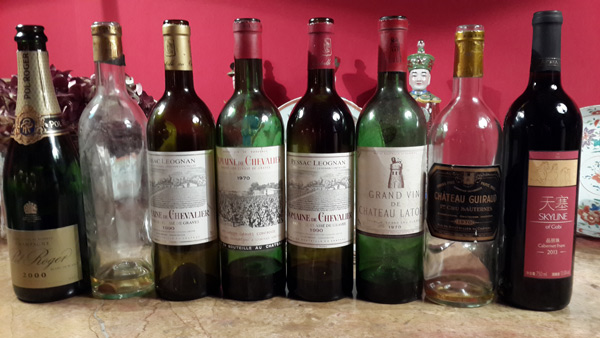
Here the dinner reached its climax. A brilliant gold-coloured sweet wine was poured into glasses when the heated discussion continued. Dried apricot, honey and marmalade nose with a freshly sweet palate, not cloying at all—such an excellent Sauternes!
12 years ago we had the pleasure to taste a Chateau La Mouleyre 1921 (Sainte Croix du Mont), and were amazed by its fresh acidity. This time I anticipated the sweet wine to be from one of Bernard’s properties—and I was pleased to find out that it was indeed Chateau Guiraud 1970.
While the guests were still chatting with great excitement, Bernard pulled out two brick-thick books and started to read aloud: the weather report for before and after harvest in 1970…
I was so deep in the pleasure brought by the wines that I couldn’t remember any of the descriptions he read out for us. But it suddenly struck me: wasn’t the kind of experience I had tonight exactly the ‘wine culture’ we were all talking about?
In April twelve years ago, my experience at Domaine de Chevalier inspired me to explore further into the world of wine. Maybe it was just coincidence that I came back to the same place exactly twelve years later. But for Chinese people twelve years is a full zodiac cycle—again it was the year of the horse.
This time I brought a bottle of Cabernet Franc made to celebrate the year of the horse from Skyline of Gobi Vineyard, Kurle, Xinjiang (this wine is included in the estate’s Zodiac range). I handed this wine, which I took part in the making of it, to Bernard, as an answer to my visit 12 years ago.
So what have I gained from this visit? I suppose promoting the kind of wine culture I experienced here is a good start…
Translated by Sylvia Wu / 吴嘉溦
All rights reserved by Future plc. No part of this publication may be reproduced, distributed or transmitted in any form or by any means without the prior written permission of Decanter.
Only Official Media Partners (see About us) of DecanterChina.com may republish part of the content from the site without prior permission under strict Terms & Conditions. Contact china@decanter.com to learn about how to become an Official Media Partner of DecanterChina.com.

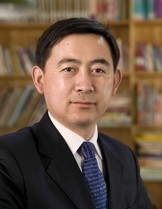
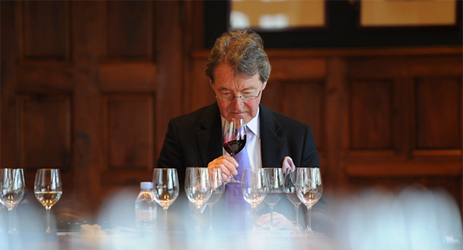
Comments
Submit